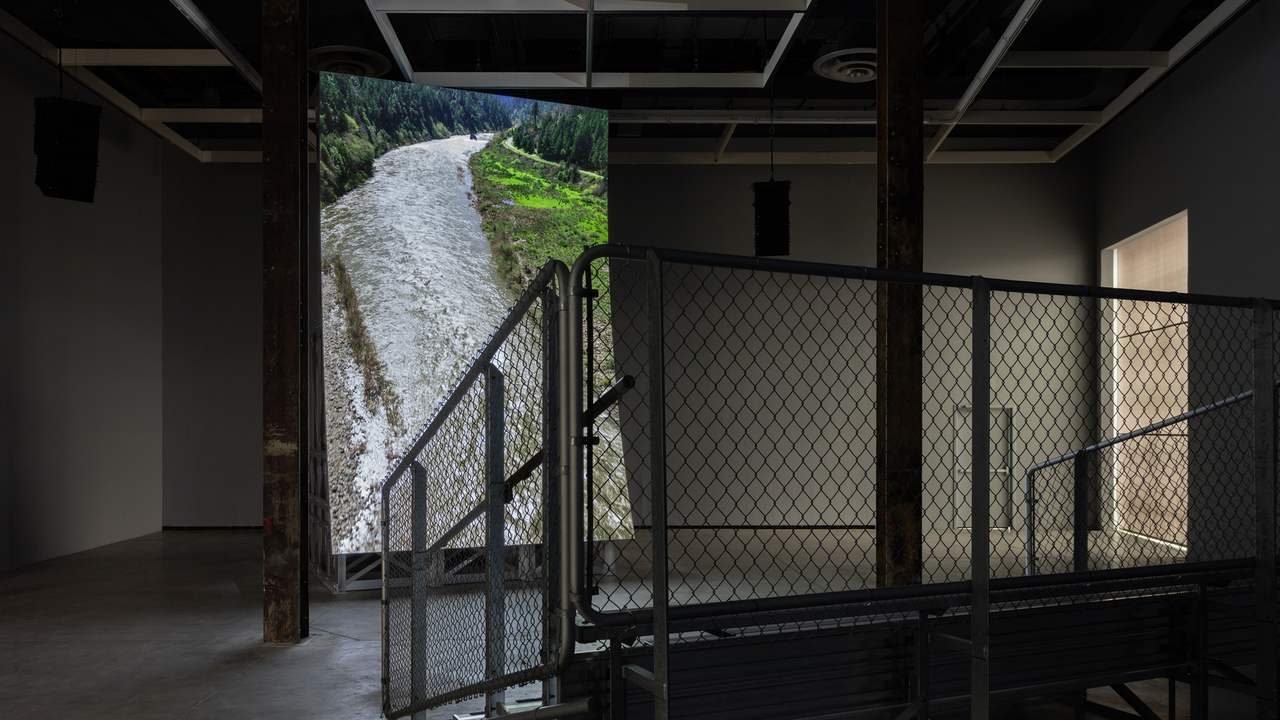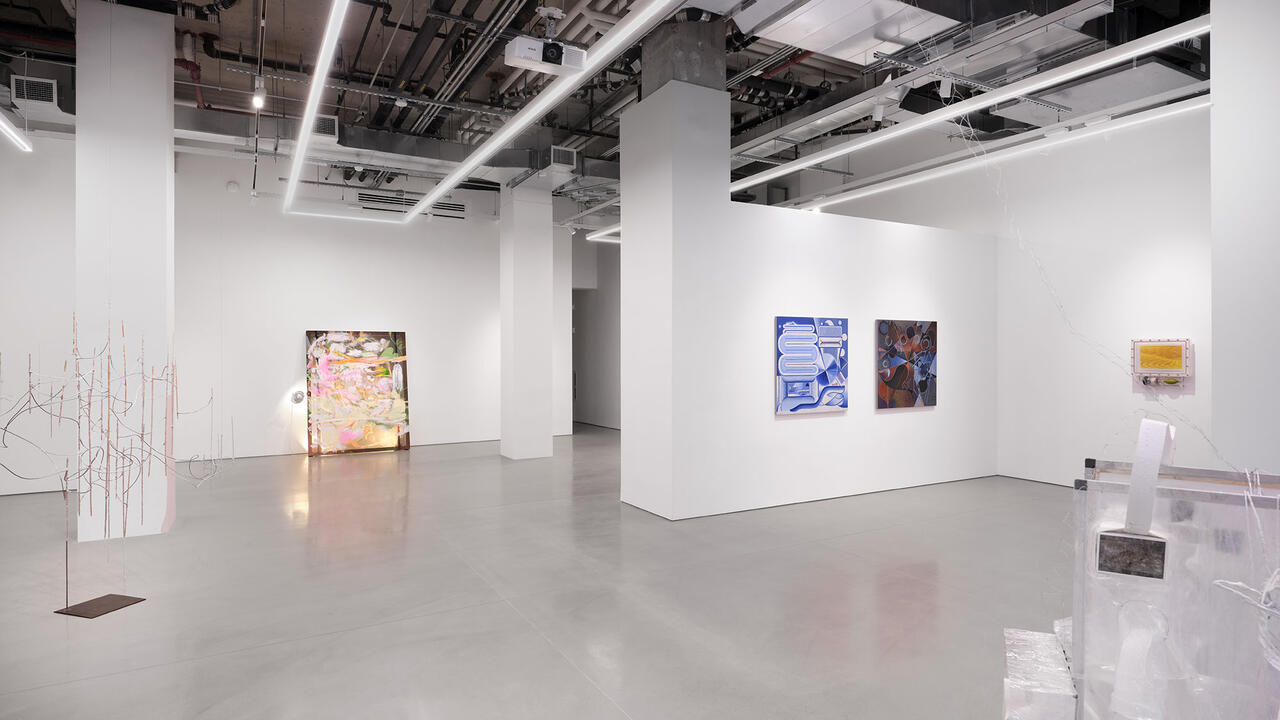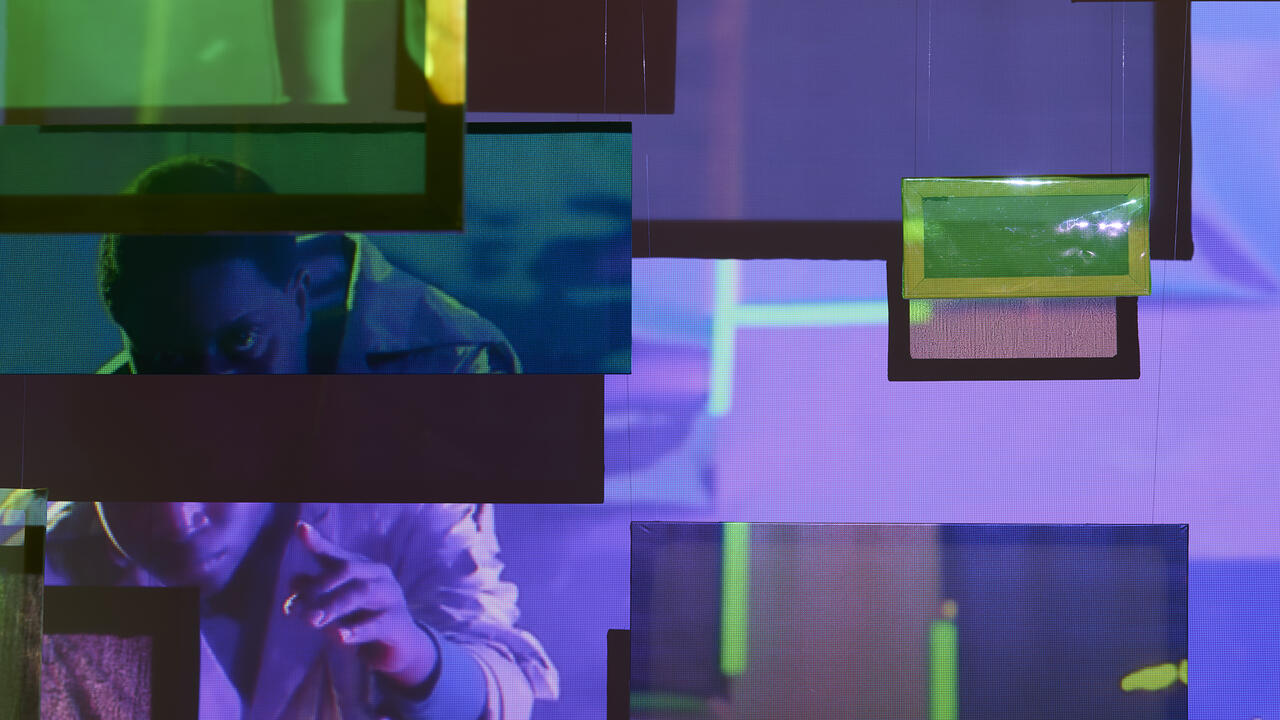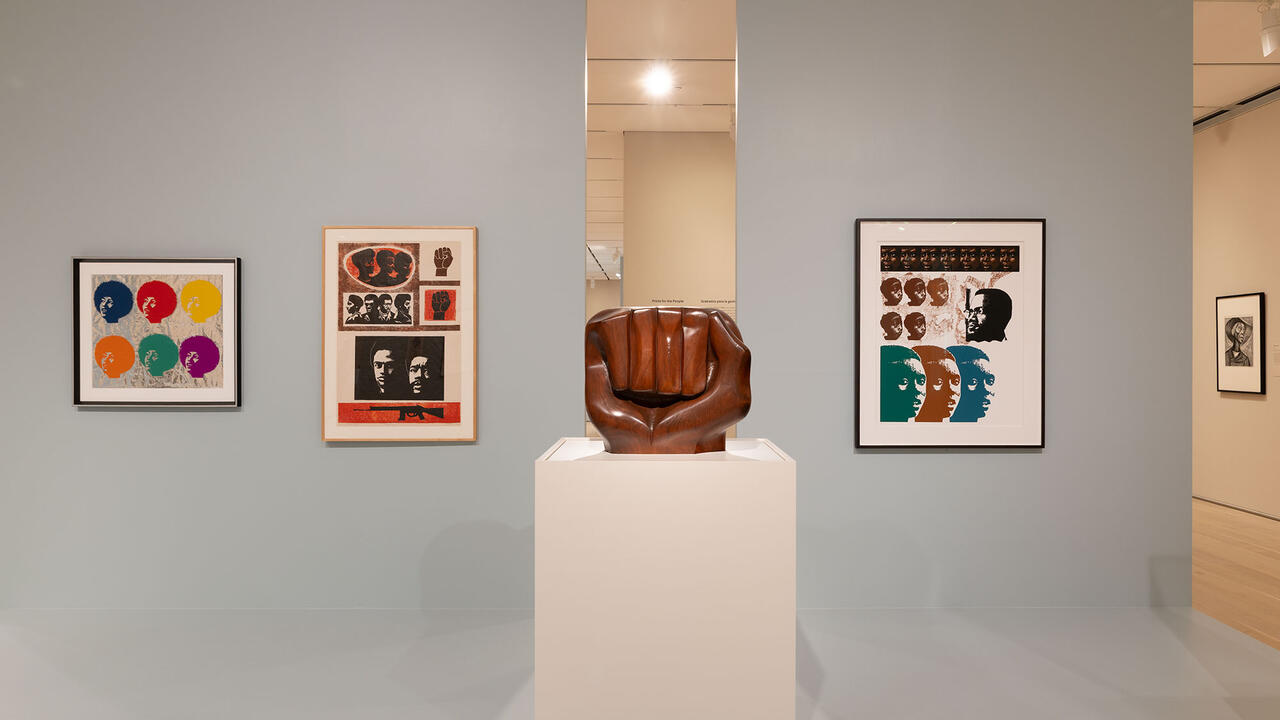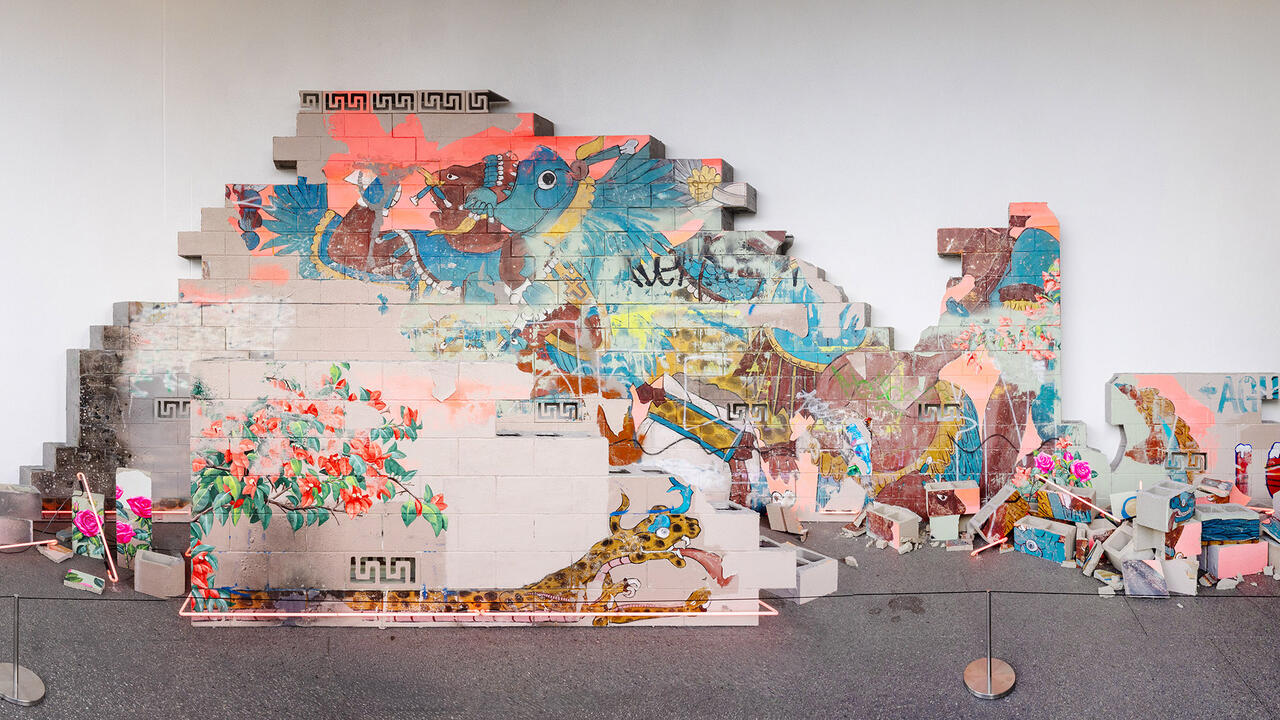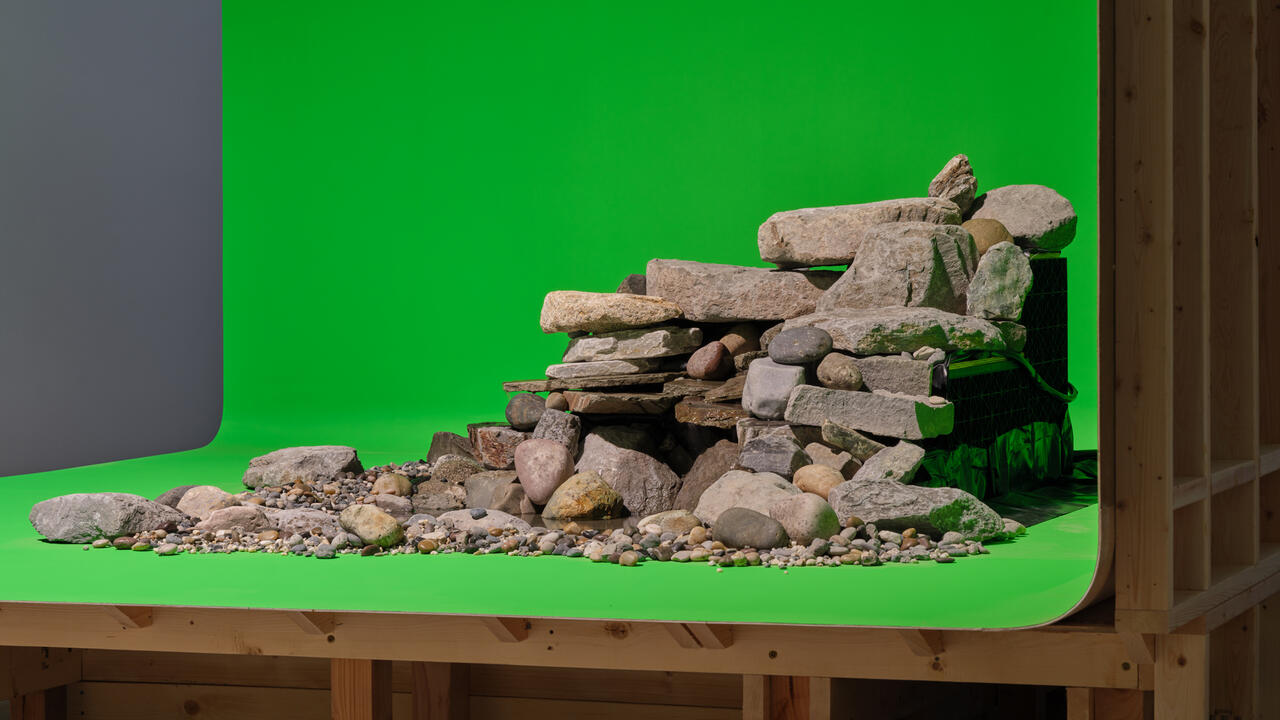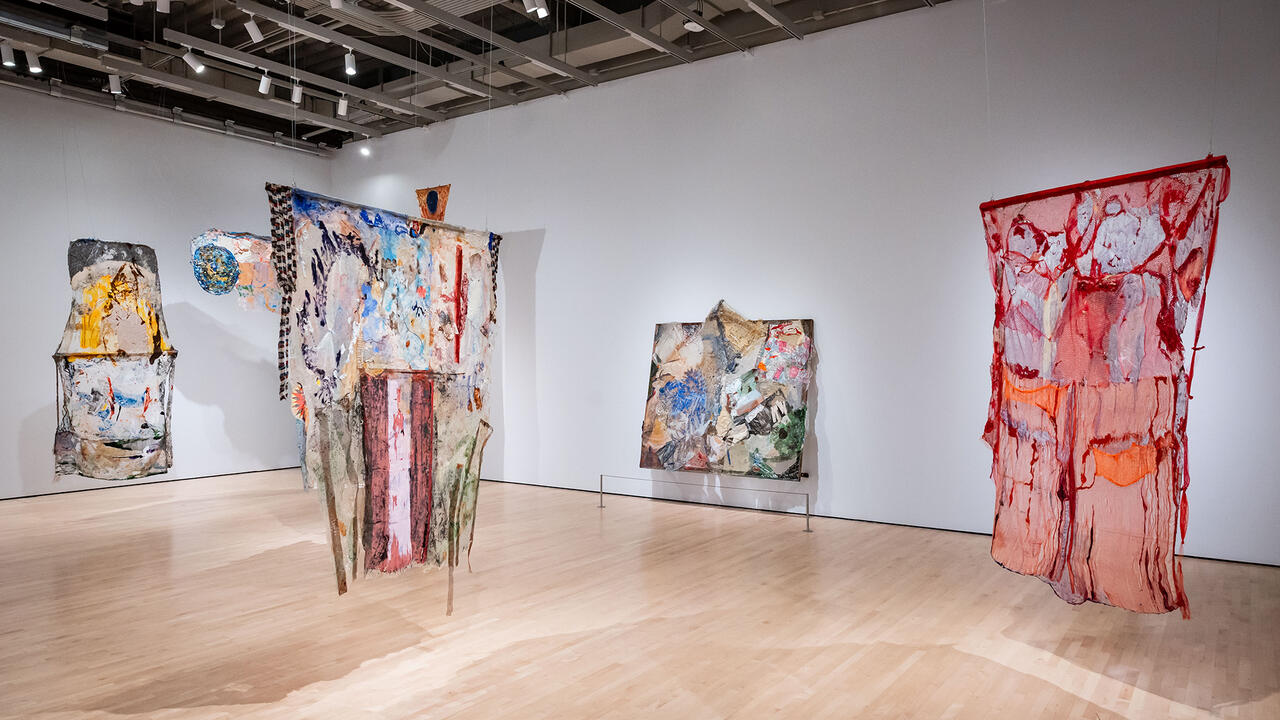Steven Shearer’s Ode to Metalheads, Punks and Hippies
A recent survey at The Polygon, Vancouver, showcases the painter’s varied practice in photography
A recent survey at The Polygon, Vancouver, showcases the painter’s varied practice in photography

Steven Shearer is best known for his oil paintings of white men from various subcultures – metalheads, punks, skids, hippies – reminiscent of symbolist and pre-Raphaelite styles, such as those of Henri de Toulouse-Lautrec or Dante Gabriel Rossetti, but rendered instead in vivid, psychedelic colours. However, Shearer’s current survey at The Polygon – a non-collecting institution in North Vancouver that exhibits lens-based practices – surfaces another important element of the artist’s work: photography. While there are a few examples of Shearer’s more customary drawings and paintings of male figures, the show highlights parts of his practice that deepen and inform those works: collages, sculptures, artists’ books, inkjet paintings and photographs.

Shearer’s subjects for his paintings and drawings – those lost dudes of suburbia – are taken from found photographs: specifically, a massive bank of vernacular images that the artist has been collecting for decades. Those images are here exhibited as a multi-volume bound series of photobooks, entitled Artist Books (2010–ongoing). Shearer’s understanding of this collection of found images as an artwork in itself, which blurs the line between source material and finished piece, sets him apart from the majority of painters who work from photographs. He further incorporates reproductions of some of these images into inkjet collages. Early ones, such as Metal Archive (study) (2001), present an array of images of speakers, sheds, memorabilia, album covers and instruments. More than simply creating a painterly project, Shearer is documenting and elevating the oft-maligned aesthetics of the lower-middle classes.

Only a few of the artist’s signature works are showcased in this exhibition. These include As a Boy (2016), a painting of an angelic-looking, long-haired, teenage metalhead, and Clifford (2014), a small work on paper with the feel of an old master drawing, which shows another long-haired figure rendered in neon pink and framed behind an oval mat board: an image that is both witty and dignifying. (The original found photographs of both subjects are displayed in pages of Artist Books.) A more recent painting, Potter (2021), is compositionally and stylistically bolder: in the foreground of this colourful image, a man with a mullet, whose bare-chested skin glows orange, is throwing a ceramic vessel on a potter’s wheel. In the background, shelves of finished pots glow in a variety of hues and patterns.

The show’s centrepiece, Sideshow Rigmarole (2020), is a series of 33 inkjet prints mounted on rag paper. Mostly featuring 1960s British bands or film posters, the images are printed in black onto a hand-painted, monochrome dayglo acrylic backdrop. Formally, these works look like screenprints, but Shearer’s use of an inkjet printer means they achieve a scale and resolution of detail that would be impossible for a regular silkscreen print. Visually distinct from the artist’s luscious, mannerist depictions of metalheads, the exhibition underscores another aspect of Shearer’s practice: his affinity to pop art and, in particular, the influence of Andy Warhol. One of my favourite works in the exhibition, Backlot (2019) – a large-scale, inkjet picture of a Corvette printed on stretched canvas painted in a bitchin’ baby-blue acrylic – neatly epitomizes these concerns: the use of found images from a pop-culture vernacular to exalt an almost-forgotten working-class aesthetic from another era.
Steven Shearer is on view at The Polygon, Vancouver, until 13 February.
Main image: Steven Shearer, 'Sideshow Rigmarole', 2022, installation view. Courtesy: © the artist and The Polygon, Vancouver; photograph: Rachel Topham Photography











